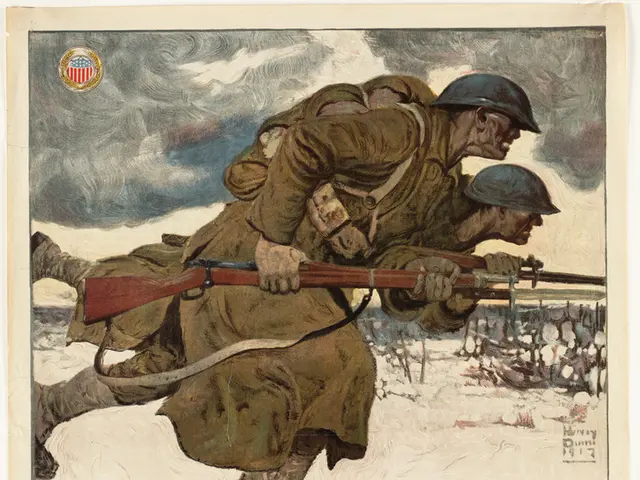Nightclub "Eagle Club" once occupied Wiesbaden Kurhaus
In the aftermath of World War II, a unique establishment emerged in Wiesbaden, Germany. Known as the Red Cross Eagle Club, this venue became a hub of entertainment and social activity for American officers stationed in the city.
The Red Cross Eagle Club first opened its doors in the Wiesbaden Kurhaus in March 1945, providing a much-needed respite for the soldiers. The Kurhaus, a grand building originally designed as a spa, was one of the many structures seized by American forces in the city.
Initially, Germans were only allowed to visit the club on Tuesdays for concerts, and only in the company of an American. However, this restriction was soon lifted, and the club began to offer a wide range of activities. From cabaret and music performances to boxing matches, horse shows, and fitness rooms, there was something for everyone. The club also boasted a cinema, and opportunities for sports, language, and music courses.
In the following years, the Special Service took over the operations of the Red Cross Eagle Club. Despite this change, the club continued to thrive, attracting a number of famous American celebrities, including Zsa Zsa Gabor, Frank Sinatra, Paulette Goddard, Lana Turner, Martha Raye, and Rita Hayworth.
In October 1954, the Red Cross Eagle Club moved from the Wiesbaden Kurhaus to a new location, the Villa Soehnlein-Pabst, also known as the "White House" on Paulinenstraße. This villa, built at the beginning of the century by a German-American entrepreneurial couple, became the club's permanent home.
The Villa Soehnlein-Pabst had previously been the property of the Söhnlein-Pabst family. However, in 1996, the US government returned both the house and the land to the state of Hesse. Today, the villa is used as a residence and is a protected historic monument.
The Red Cross Eagle Club's move to the Villa Soehnlein-Pabst marked a new era for the club. Although it was primarily for American officers, the club continued to offer the same wide range of activities that had made it so popular. The Kochbrunnen area in Wiesbaden, where the villa is located, was made a military restricted zone by American forces in 1945, but this did not deter the club's patrons.
In conclusion, the Red Cross Eagle Club played a significant role in the social and cultural life of Wiesbaden during the post-war years. Its move from the Wiesbaden Kurhaus to the Villa Soehnlein-Pabst in 1954 marked a new chapter in the club's history, one that continues to be celebrated today.
Read also:
- visionary women of WearCheck spearheading technological advancements and catalyzing transformations
- Recognition of Exceptional Patient Care: Top Staff Honored by Medical Center Board
- A continuous command instructing an entity to halts all actions, repeated numerous times.
- Oxidative Stress in Sperm Abnormalities: Impact of Reactive Oxygen Species (ROS) on Sperm Harm







